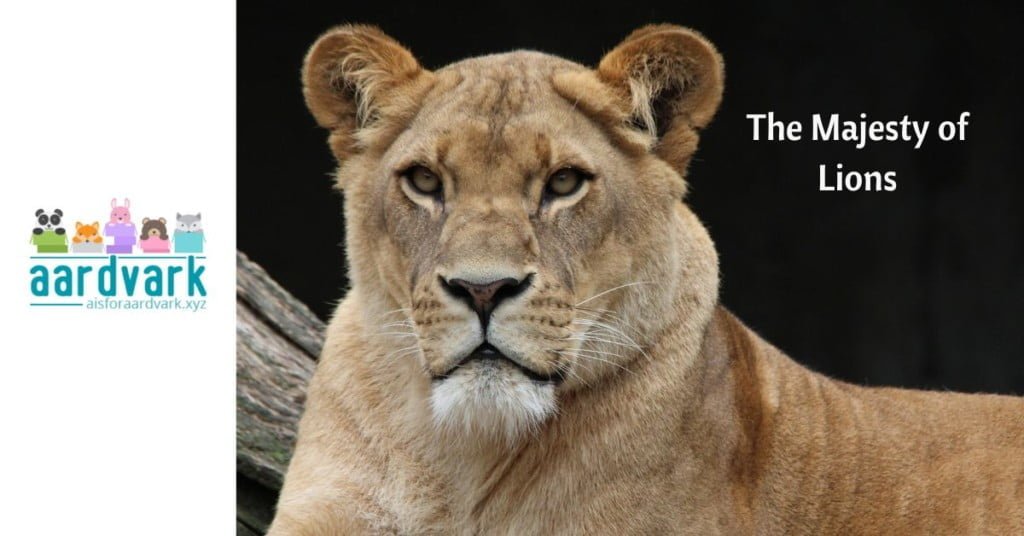Lions, known as the “King of the Jungle,” are among our planet’s most iconic and revered animals. These majestic creatures are symbols of strength and courage in various cultures and play a crucial role in the ecosystems they inhabit.
Physical Description
Lions (Panthera leo) are the second-largest cats in the world, after tigers. Adult male lions are particularly notable for their impressive manes, a sign of maturity and strength. These manes can vary in color from blonde to black, and their presence makes males appear larger and more intimidating. Females, or lionesses, are slightly smaller and lack a mane.
These big cats have a muscular build, deep chest, and a short, rounded head with a reduced neck and round ears. Their coat is a tawny color, which provides excellent camouflage in their natural habitat.
They are among the most imposing members of the big cat family. The size and weight of a lion can vary significantly based on gender and habitat. Still, we can give you some general idea.
Male lions are typically larger than females. They can reach lengths of up to 3.3 meters (10.8 feet) from head to tail, with the tail adding another 60 to 100 centimeters (2 to 3.3 feet). Female lions are generally smaller, measuring around 2.7 meters (8.9 feet) from head to tail.
There is also a considerable weight difference between males and females. Males can weigh between 150 and 250 kilograms (330 to 550 pounds), while females typically weigh between 110 and 182 kilograms (242 and 400 pounds).
In the wild, lions have a lifespan of about 10 to 14 years, but this can extend up to 20 years in captivity. Their lifespan in the wild is often shorter due to injuries sustained from hunting, conflicts with other lions, or human interference.
Habitat and Distribution
Lions live primarily in sub-Saharan Africa. But there is also a small, critically endangered population in the Gir Forest of northwest India.
They inhabit various habitats, from grasslands and savannas to scrublands and open woodlands. Historically, their range was much more extensive, covering most of Africa and parts of Europe and Asia. However, habitat loss and conflicts with humans have significantly reduced their distribution.
Did you notice that they don’t live in the jungle? Well, at least not as we use the word. “Jungle” actually comes from Hindi, one of the languages spoken in India. And it means “an uninhabited place.” So, in the original language, it makes a lot of sense. It just doesn’t translate well into English!
Diet and Hunting
Lions are apex predators and hunt large ungulates such as zebras, wildebeests, and antelopes. They are unique among big cats in that they have a social structure that involves cooperative hunting, which increases their success rate. Lionesses do most of the hunting for the pride. They use intelligent hunting tactics like encircling prey and taking turns chasing it. Lions can eat up to 15% of their body weight in a single meal and go for days without eating after a big feast.
Even though lions are generally at the top of the food chain, they still have an enemy: the hyena. Hyenas will team up to steal a lioness’ kill, or attack a tired or injured lion.
Social Structure and Living Habits
Lions are the most social of the big cats. They live in groups called prides, which consist of related females, their offspring, and a small number of adult males.
The pride’s social structure is complex and hierarchical, with the females typically staying with their birth pride for life. But males often leave their birth pride to establish or take over another pride.
Lions spend considerable time resting and are inactive for about 20 hours per day.
Mating and Reproduction
Lionesses are polyestrous, meaning they can go into heat several times a year. There is no specific breeding season, and mating can occur at any time. After a gestation period of about 110 days, lionesses typically give birth to a litter of one to four cubs.
Cubs are born blind and helpless, and mortality rates are high in the first few months. They are weaned at about six months but remain with their mothers for two years. By age three, they are sexually mature and ready to breed.
Cultural Significance
Throughout history, lions have held a significant place in culture and symbolism. In ancient Egypt, the lioness was worshiped as the war goddess Sekhmet. In Greek mythology, the Nemean lion was a creature that symbolized strength and power. In modern times, lions are still symbols of bravery, royalty, and strength. They appear in coats of arms, national flags, and as mascots for sports teams.
Pop Culture Appearances
In popular culture, lions have been depicted in various forms of media. The most famous example is Disney’s “The Lion King,” which portrays lions in a fictionalized, anthropomorphic manner.
Other notable appearances include the MGM lion logo in cinema and the character of Aslan in C.S. Lewis’s “The Chronicles of Narnia” series.
Conservation Status
Lions are currently listed as vulnerable on the IUCN Red List. Their populations decline due to habitat loss, human-wildlife conflict, and poaching. Conservation efforts focus on overcoming these three factors.
Lions are essential as apex predators in their ecosystems and are significant in human culture and imagination. Their powerful presence, both in the wild and in our stories, inspires awe and respect. The ongoing conservation efforts are crucial in ensuring that these magnificent creatures continue to thrive in their natural habitats for future generations to appreciate and admire.


